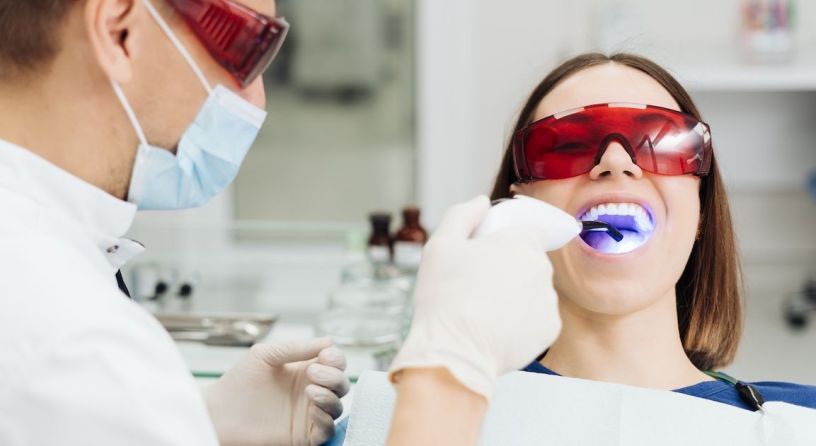Introduction: In the dynamic field of dentistry, technological advancements are reshaping the way oral healthcare is delivered. This article delves into the latest breakthroughs, exploring the future of dentistry through innovations such as 3D printing, teledentistry, and AI-driven diagnostics.
I. 3D Printing in Dentistry: Precision and Personalization 3D printing has transcended its novelty status and become a game-changer in dentistry. This technology enables the creation of precise and personalized dental components, from crowns and bridges to implants. The ability to fabricate intricate structures with unmatched accuracy not only streamlines the manufacturing process but also enhances treatment outcomes, ensuring a perfect fit for each patient.
II. Teledentistry: Revolutionizing Remote Oral Healthcare In an era where remote services are becoming increasingly prevalent, teledentistry emerges as a transformative force. This technology allows patients to consult with dental professionals virtually, opening avenues for remote diagnoses, treatment planning, and follow-up appointments. Teledentistry not only improves access to oral healthcare but also offers convenience and flexibility for both patients and practitioners.
III. Artificial Intelligence in Dental Diagnostics: Enhancing Precision Artificial Intelligence (AI) is making waves in dental diagnostics, significantly enhancing the precision and efficiency of assessments. AI algorithms analyze radiographs, intraoral images, and patient records to assist in early detection of dental issues. From identifying cavities to assessing periodontal conditions, AI-driven diagnostics contribute to more accurate diagnoses and tailored treatment plans.
IV. Laser Dentistry: Minimally Invasive Precision Laser technology has evolved to become an integral part of modern dentistry. Laser dentistry offers a minimally invasive approach for various procedures, including gum surgeries, cavity treatments, and teeth whitening. The precision of lasers allows for targeted tissue removal and promotes faster healing with reduced discomfort for patients.
V. Augmented Reality (AR) in Treatment Planning: Visualization Redefined Augmented Reality (AR) is reshaping the way dentists plan and communicate treatment options with patients. AR applications allow practitioners to visualize treatment outcomes and explain procedures in an immersive and interactive manner. Patients can better understand their dental conditions, fostering informed decision-making and improving overall treatment satisfaction.
VI. Smart Toothbrushes and Oral Health Apps: Personalized Care at Home The rise of smart toothbrushes and oral health apps brings personalized care into the hands of individuals. These devices often come equipped with sensors and connectivity features to track brushing habits, provide real-time feedback, and even offer personalized oral care routines. By promoting effective at-home oral hygiene practices, smart technology contributes to preventive care and overall dental health.
VII. Regenerative Dentistry: Tapping into the Body’s Healing Potential Regenerative dentistry explores innovative ways to harness the body’s natural healing potential for oral health restoration. Stem cell therapies, growth factors, and biomaterials are being used to regenerate damaged or lost dental tissues. This approach holds promise for regenerating bone, treating periodontal disease, and even regrowing damaged teeth in the future.
VIII. Digital Impressions: Saying Goodbye to Traditional Molds The era of uncomfortable dental impressions using traditional molds is gradually fading away with the advent of digital impressions. Intraoral scanners capture detailed and accurate images of the teeth, eliminating the need for messy molds. Digital impressions not only enhance patient comfort but also improve the precision of restorations and prosthetics.
IX. Nanodentistry: Precision on a Molecular Scale Nanodentistry operates on a molecular scale, introducing nanomaterials and nanorobots for precise diagnostics and treatments. This emerging field holds potential for targeted drug delivery, early detection of dental issues at a molecular level, and the development of advanced materials with enhanced properties for dental applications.
Conclusion: In conclusion, the future of dentistry is a realm of technological marvels, transforming how oral healthcare is practiced and experienced. From 3D printing and teledentistry to AI-driven diagnostics and regenerative approaches, these innovations promise a future where dental care is not only more effective but also more personalized and accessible. Embrace the evolution, as tomorrow’s smile is being shaped by the cutting-edge technologies of today.

